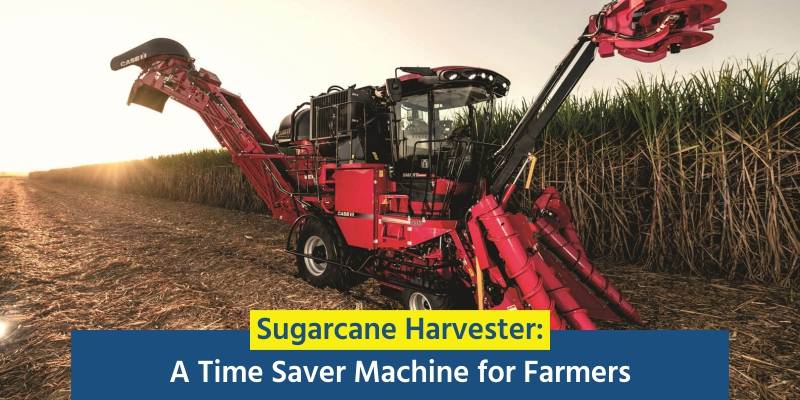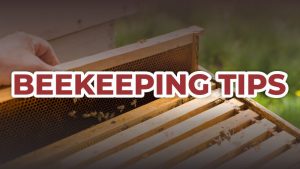Sugarcane is the most famous and local cash crop of India. Sugarcane is grown in tropical and sub-tropical climatic conditions like countries of Asia, Africa, and Latin America. Major sugarcane-producing countries of the developed world are Australia and the United States of America.
Sugarcane development practices fluctuate from country to country and inside a country. For instance, Sugarcane crop spacing in India shifts from 60 to 100 cm while in numerous different nations from 150 to 180 cm.
Sugarcane is planted in a field with ridge and furrows or in level fields. Fluctuating planting practices present a various plan for designing sugarcane harvester machines. Most of the sugarcane Harvesting in India and other non-industrial nations is manual.
De-husking, cleaning, packaging of the cut stick, and stacking for transportation are done physically. Indian Institute of Sugarcane Research Lucknow has built up a sugarcane stripper. This Stripper does the work of de-topping and dressing of the stick.
Sugarcane harvester includes base cutting of the harvest, de-topping, de-trashing, packaging, stacking, and transportation.
De-topping and de-trashing of yield itself take around two-thirds of the labor needed for sugarcane harvesting purposes. There are many types of sugarcane harvesters are utilized the world over.
They are regularly utilized for crops, which are fired in the field after harvesting for stubble expulsion.
A few sugarcane harvesters are utilized in green yield and the stick is singed in windrow subsequent to harvesting.
A few machines have been created which can be utilized in the sugarcane field without any stubble burning. This is especially done where stubble burning is objected to by environmentalists.
A sugarcane combine is a one-pass machine, which cuts the stick, de-tops, cuts in billets, cleans, and passes on to ship truck or tractor trolly.
sugarcane harvester cuts the yield, de-top it, and put it on the ground in the windrow, which is stacked in tractor trolly or cart by mechanical loader.
Sugarcane harvester harvested sticks should be processed in 16 hours to stay away from crumbling and sucrose misfortune.
The vast majority of the sugarcane harvester is the self-impelled machine. Notwithstanding, some tractor-drawn machines are additionally accessible.
Basic Components of Sugarcane Combine
Gathering Mechanism
- Function to Separate Sprawled Cane
- Align the Row to Be Harvested.
- Revolving Scrolls Mounted on Gathering Walls.
- Consists of Two Triangular Walls
Topping Mechanism
- Gather, Cut and Discard Non-Productive Tops
- Gathering Operation Performed by Gathering Chains
- Cutting Done by A Horizontally Rotating Disc Fitted with Mower Blades
Base Cutter
- Cut Stalk at Ground Level with Proper Speed
Feed Conveyor
- Convey Whole Stalks of Cane from Base Cutter to Choppers.
- Made of Endless Chain Slat Conveyor or Series of Rollers.
Choppers
- Receive Whole Stalks from Feed Conveyer
- Chop Stalks into Short Uniform Billets.
Elevator
- Receive Billets from Choppers
- Convey Billets into Receptacle for Transporting Purpose.
- Inclined Chain and Slat Conveyor Used.
- Rotated At 180 Degrees
Air-Blast Cleaning
- One- Two Fans Used for Extracting Leaves and Dirt from Cane
Generally Used Sugarcane Harvester Types
Push-Rake Framework
Push-rake framework includes pushing and heaping of sugarcane. It is made of exceptionally tough prongs welded to an edge. It is mounted before the tractor. At the point when the machine is driven into a standing stick in the field, it severs the stalks at the outside of the ground and leaves them in heaps.
The heaps of stick are then stacked into the truck and conveyed to the factories. The primary disadvantage of this machine is that the stick isn’t bested, and the stick conveyed to the process contains ¼ to 33% of garbage. It evacuates stick plants, which brings about poor ratoon crop.
Windrow Harvesting Framework
In this framework, sugarcane is cut and windrowed. It has a V-shaped harvesting framework. The V-shaped harvesting framework has two roundabout flat edges divided at 152.4 cm.
The machine cuts the stick in the field and makes a windrow of two columns. The yield collected by this machine has likewise a high level of junk. The unit is mounted on a tractor.
Soldier-Type Sugarcane Harvester
It beats the stick, cuts the stick from the base, and places it in a windrow for mechanical stacking. It cuts each column of the green stick in turn.
A clincher with a social affair chain and two plates eliminate the top from standing yield and drop towards the right of the column being reaped.
Two arrangements of chains in a V are utilized for picking and taking care of the stick to the base shaper.
The harvested stick is passed on through a stick conveyer on the framework to the windrow. Both the tasks of fixing and base cutting are performed all the while. It doesn’t evacuate the stick and its ability is about 0.4 ha/h.
Mcconnel Sugarcane Harvesting Framework
In this framework, the machine is mounted on a 75-90 hp tractor. The machine cuts the top green segment of sugarcane, harvests from the base, cleans the stick and places it in a windrow.
The stick is additionally cleaned by work and stacked physically or precisely in the truck. It harvests a row in a turn.
Cut-Crop Sugarcane Harvest or Combine Harvest Framework
All harvest frameworks depicted so far specifically push, heap and snatch framework and windrow harvest framework share one activity. It is the stick being put on the ground for stacking after cutting.
This activity is somewhat answerable for stick left in the field and soil and studs conveyed to the sugar plant. with the help of a sugarcane combine harvest system, this problem would be eliminated.
Expectations of Farmers from Sugarcane Harvester
- Sugarcane harvester ought to have the option to cut the entire stick from the base, de-trash it, de-top it, and may place the cut stick in the compartment appended behind or may windrow the cut yield.
- Crop Spacing should be adjustable to cut stick developed at a dividing of 60 to 150 cm.
- 70-80 HP Tractor should be enough for Sugarcane harvester operations
- The limit of Sugarcane Harvester ought to be 1.5 to 2.0 ha/day or significantly more.
- The expense of the Sugarcane Harvester ought to be minimum with the all-out expense of collecting activity not as much as Rs. 300 – 500 for each ton.
- Sugarcane Harvester ought to be light in weight with a low turning radius.
- waste or trash substance ought not to be over 5%.
Famous Sugarcane Harvester at Best Price in India
- Shaktiman Sugarcane Harvester
- New Holland Austoft Sugarcane Harvester
Sugarcane Harvester reduces the dependency on labor and saves the time of Indian Farmers. If you want to know about Sugarcane Harvester’s price in India, Sugarcane harvester’s technical specification then downloads KhetiGaadi Mobile Application. KhetiGaadi Plays an Important role to bring Indian farmers under Digitalization.
Visit our page for more information about Tractor, Agricultural implements, Tractor Price, Tractor Videos, and Tractor Games.




